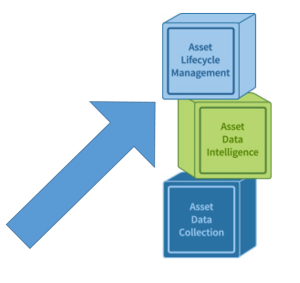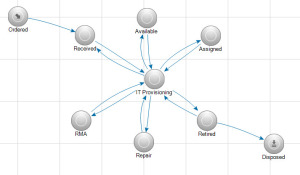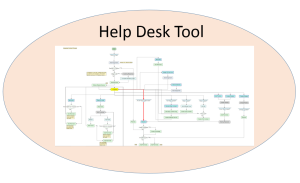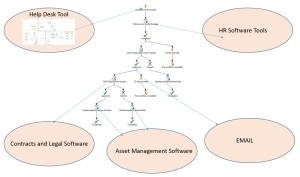IT Asset Lifecycle Management Process Automation
IT Asset Lifecycle Management is Tier Three of IT Asset Management.
Tier three is about managing IT Lifecycle Processes. This includes automating your processes to eliminate human error which can occur while doing manual input. It is important to choose automation tools that meet your asset management requirements and that allow you to apply ITAM principles.
Asset Lifecycle Process
The lifecycle of an asset is usually determined by the type of asset being managed. For example, the lifecycle of a laptop would be much different than the lifecycle of a software asset. To create an asset lifecycle process, you need to understand how you purchase, receive, procure, and dispose of an asset. A laptop lifecycle process may look something like this:
State Map
Each part of an asset’s lifecycle is a “State.” To determine the States of the lifecycle process, create a diagram such as the one above. Use your diagram to determine each State that will be used in the asset lifecycle process. For example, based on the diagram above, the different States assigned to laptops may look something like this:
The State of the asset tells you where the asset is in the lifecycle. The lifecycle process should NOT allow you to bypass States. In the diagram below, A can be changed to B, B can be changed to C, and C can be changed to D, E, or F.
In this example, A should not be allowed to jump to C, D, E, or F and B should not be allowed to jump to D, E or F. The method you use to change the State field should be enforced through an automated process.
If you rely on manual input to change the State of the asset, there is a greater possibility of human error and as a result, you will very likely lose track of some of your assets. Choose asset management tools that allow you to enforce your lifecycle processes by using process automation.
Process Automation for IT Asset Lifecycle Management enforces lifecycle processes by automatically enforcing the pre-determined lifecycle path.
For example, when a laptop arrives at the loading dock, a barcode scanner may be used to account for every box unloaded. If the asset is tracked from the time it was purchased, based on the laptop lifecycle process above, the moment the asset is scanned by the barcode scanner, an automated process should change the State from “Ordered” to “Received.”
When you evaluate tools for asset lifecycle process automation, it is helpful to understand the two types of process automation tools available: In-App Processes and Out-of-App Processes.
In-App Processes
In-App processes are processes that run within a software tool. The processes are designed as part of a software application or a software suite. They are usually built to support the features offered by the software.
A good example of In-App processes can be found in many ITSM tools. For example, an incident opened by the help desk will have a process associated with it to define how the incident is assigned, escalated, and closed.
However, if you attempt to do IT Asset Lifecycle Management using In-App processes from your ITSM tool, it might be a challenge since the processes were built to support the ITSM software solution.
Out-of-App Processes
Out-of-App processes are independent of a software tool. The goal for this type of process tool is automation. Out-of-App process tools are much more flexible which means you could build help desk processes with this type of process automation tool; however, it would require a lot more. For example, additional tools would be required to build forms, to build and manage a database, and to build reports.
The advantage of an Out-of-App process automation tool is the ability to build automation using multiple databases and software tools within your organization.
For example, your organization may build a form on the internal web site to order new printer toner. When the toner is ordered, a process may take the data and automatically update the purchasing department’s database, create a purchase order, and send it to the printer vendor without any intervention.
Hybrid-App Process Automation For IT asset lifecycle management, the best solution for process automation would be to have a hybrid of In-App process automation tools and Out-of-App process automation tools. Having both types of process automation tools would allow you to fully automate all your IT asset requests.
Many organizations use an ITSM tool for IT Asset Request Management. You could automate IT asset request processes from your ITSM tool using your IT asset management lifecycle processes.
If your asset lifecycle processes are Out-of-App processes, they will not only update the asset management database, they will also update the finance database, contracts database, and create the purchase order.
An Out-of-App process can also take a software request made from your ITSM solution and pass it to your software distribution tools, update the Asset Management database, and then notify the ITSM tool that the application has been delivered and installed. I will address asset management and help desk integration in greater detail later this year.
Summary
IT Asset Lifecycle Management is tracking an IT asset from when it is requested to when it is disposed. Lifecycle processes will track the State of the asset that is managed by the organization. Asset Lifecycle process automation enforces lifecycle processes by eliminating human error.
Process Automation can integrate and automate your IT Asset Management tools with other tools on your network. Using a three-tiered approach to implement asset management will help you collect, organize, and manage your assets when applying ITAM principles.
Follow me on Twitter @marcelshaw
See Also:
IT Asset Management, a Three Tiered Approach (Part 1 of 4)





